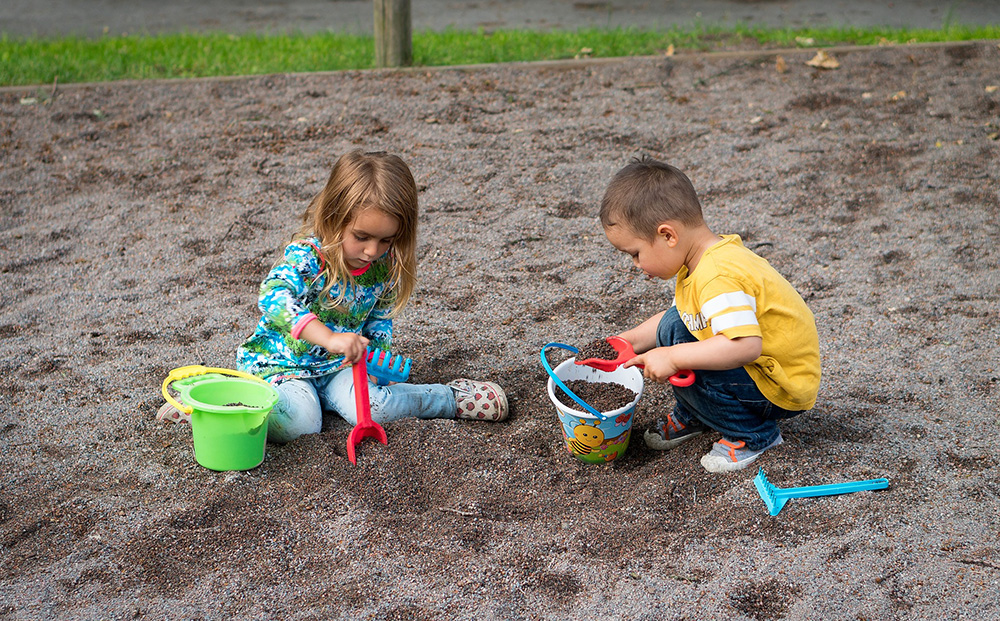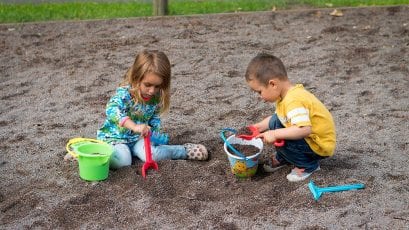Early Childhood
Inspiring Play in Young Learners: Trust the Child’s Play!
For a child, play is the essence of their world.
Imagine you see a beautiful child at play in the sandbox at the local park. You assume the boy is around 2-3 years of age by his size and how he speaks with his peers. You see him scoop up a handful of sugary sand. He looks intently as it spills from his hands and very carefully analyzes each particle left on his palm. He walks over to his caregiver and asks for a bottle of water and returns to the sandbox with his request. He slowly pours the water into the sand to create essentially a sandy mud pit! But, instead of rolling around in it, he grabs a handful of the sand and molds it into a ball. He unselfishly hands it to another child who just joined him in the sandbox. He says “ball” two or three times to his new playmate, who in turn joyfully grabs the sand “ball” and throws it. They both laugh when it squishes on the ground and turns into sand once more.
This simple, yet powerful, activity you just witnessed is the essence of childhood. It is the unstructured, unscripted, non-threatening avenue of play children naturally lean towards as they grow into this fascinating world of ours.

When you think of the child, let’s call him Joseph, some may see a messy child playing in the sandbox. How is the child’s caregiver going to clean out the sand from his socks, pant pockets, and fingernails? How can the caregiver assume he will not get sand in his or other’s eyes? The answer is quite simple. Trust the child’s play. Children are wired for play. Each child plays differently from one another, and in turn, develops problem-solving strategies, language skills, and social-emotional characteristics differently from one another. To Joseph, it is not just a box of sand, but it is a world of possibilities. He made a ball with his tiny hands and gave it away to another child, who in pure genius, took the ball and threw it! This one act of play shows simplicity, yet, the complexity of what play entails for a young child. To see a few activities children can enjoy in your classroom through play in the sand center, click on the resource hub below.
In this blog series, we will explore mathematical play and how it can be utilized at home and at school, as well as how we can take the reins once again to empowering children’s thinking, creativity, and laughter through the act of play.
Click HERE to download the resources for this article!
About ORIGO Education
ORIGO Education is dedicated to making learning meaningful, enjoyable and accessible for all students with Pre-K and Elementary print and digital instructional materials, as well as professional learning for mathematics.
![]()




